Engaged Anthropology Grant: Eric Hirsch
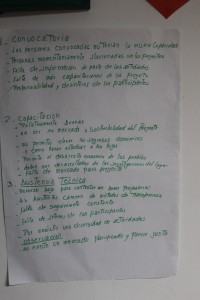
In 2013 while a doctoral student at the University of Chicago Eric Hirsch received a Dissertation Fieldwork Grant to aid research on “Investing in Indigeneity: Development, Promise, and Public Life in Andean Peru’s Colca Valley,” supervised by Dr. Justin Richland. Upon receiving an Engaged Anthropology Grant in 2017 Dr. Hirsch was able to return to Peru to aid engaged activities on “After Development: Reconsidering Investment’s Promises with Participant Testimony”.
“After Development” was an engagement project I carried out in June and July of 2017, run in collaboration with local partners in the villages of Lari and Yanque in Andean Peru’s Colca Valley. For this project, I asked a small selection of Lari and Yanque residents that had been participants in one of the region’s many small-scale environmental and economic sustainability projects to offer their feedback on those projects in six workshops. Their audience consisted of former contract employees of the Center for the Study and Promotion of Development (or Desco) NGO who had worked on short-term development projects in these two villages. Most of those NGO projects, including one I followed as part of my original Wenner-Gren-supported research, lasted between 1.5 and 2 years and had ended in the region by late 2014. The Engaged Anthropology Grant allowed me to pay people for their labor time attending the workshops and to leave each village workshop group a set of digital voice recorders.
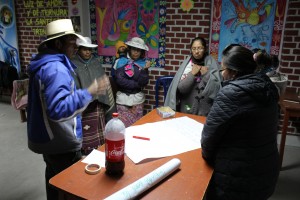
The six workshops that I organized in collaboration with villager and NGO-staffer partners allowed me to triangulate dissemination of my ethnographic data on the sustainable development investments I followed in those villages with two key activities: (a) critical reflections from people who had received sustainability investments, capacity-building, and supervision for the length of a locally typical 1.5 to 2-year project, about how they felt those projects’ impacts three years later; and (b) the listening and feedback of the development institution staff members that oversaw those investments but were now unaffiliated.
The workshops were broken into three components. First, I described my research. I told my workshop audiences that I had lived in the Colca Valley between 2013 and 2015 to assess the local implications of the rather sudden global idea that indigeneity was a development asset and a key to ecological well-being, after it was long seen within Peru as a liability to be suppressed. I traced the ways that the promise of profitable indigeneity was put to use in NGOs like Desco and other projects that populated the region since the mid-1990s. I also described how my research focus built on older literature on sustainability, participatory development, and NGOs to discern a linkage between the Andes’ small-scale entrepreneurship investments and the region’s new large-scale extractive expansionism rooted in the idea that the Andean region was a space of abundance.
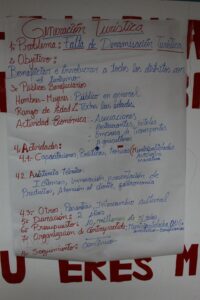
The second component of our engagement workshop consisted of partner interviews and focus groups in which former participants voiced their critiques of the projects they were part of between 2013 and 2014. Their testimonies, recorded in digital files, in my field notes, and in marker on papelotes (see image), revealed important aspects of the impacts of NGO intervention. The NGO’s main investments took the form of seed capital for entrepreneurs. We found that 50% of participants were still building the enterprise the NGO helped them set up in 2013-2014 three years later. In my discussions with Fabiola Dapino, one of the former Desco staff members who took part in the Lari workshop, she was ecstatic that the number of continuing entrepreneurs was so high—atypically high, in her analysis. However, we also found that a limited infusion of seed capital was not on its own enough support for new entrepreneurs. Those who had not continued a venture for which they had received project support reported that “we didn’t have enough money.”
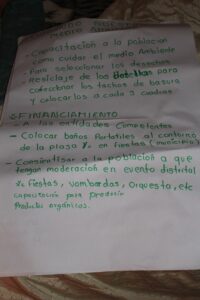
This second component of the workshop revealed the unsurprising correlation between pre-project income and the persistence of project-supported entrepreneurial ventures. But it also elucidated that the highly visible presence of NGO projects in the region during the earlier part of this decade created the false hope that infusions of investment for economically viable indigenous-branded tourism, retail, and agricultural ventures would inevitably lead to market success. This was a critique that former NGO employees at the workshop acknowledged without pushing back. Indeed, based on that critical testimony, Ms. Dapino has begun work on a memo to her NGO-based colleagues with recommendations seeking to improve project design.
More broadly, in our discussions nearly all workshop participants reported feeling abandoned by short-term NGO projects. Not only did participants describe them as too brief to exert fundamental economic or environmental change. They also lamented the exit of Desco’s projects as the organization faced its own scarce funding.
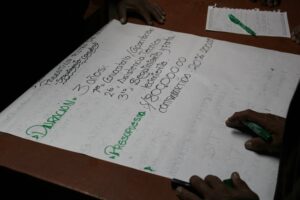
Third, villager groups spent the last days of the workshop constructing their ideal version of a future local project that would in their estimation improve village life. While the former project participants were liberal with their eviscerating critiques of the 1.5- to 2-year projects, their own projects proposed improvements but were far from structurally transformative.
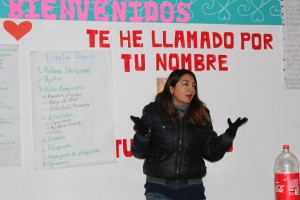
They proposed familiar NGO-style projects, intervening with more generous budgets, increased attention from a sponsoring investor organization, and an emphasis on having villagers themselves initiate project design instead of offering “input” at the end of the “participatory” planning process. Unchanged was their emphasis on the development of a tourism industry and of charismatic crops for export such as quinoa; uninspected was a faith in entrepreneurship and markets. This apparent lack of transformative ideas was a surprise especially given the burgeoning scholarly conversations about the rise of adaptation tactics, community-level transitions, and post-development alternatives in places where conventional growth is meeting its environmental limits.
However, a second surprising finding from the villagers’ ideal project design session perhaps explains the first: the workshop was so familiar as an interactional genre whose hierarchies and prescribed participant structures perpetuated a specific template of incremental technocratic change. I had hoped to use the workshop format to subvert, or at least openly question, the hierarchies between urban-based technocratic NGO employees and rural villagers. What resulted, instead, was a critical but still hierarchical listening session.
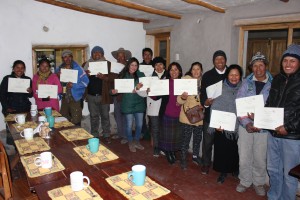
Ultimately, workshop participants were significantly more critical of the fact that NGO projects were so short and involved only minimal formal follow-up, and were now leaving the region entirely, than they were of the flaws and blind spots of specific projects. As I continue my engagement with Lari, Yanque, and other Colca Valley communities, my new research questions and future collaborations will build on that last finding from the Wenner-Gren workshop as an inquiry into how villagers are working through challenges to their economic and ecological well-being in the wake of a wave of development projects.